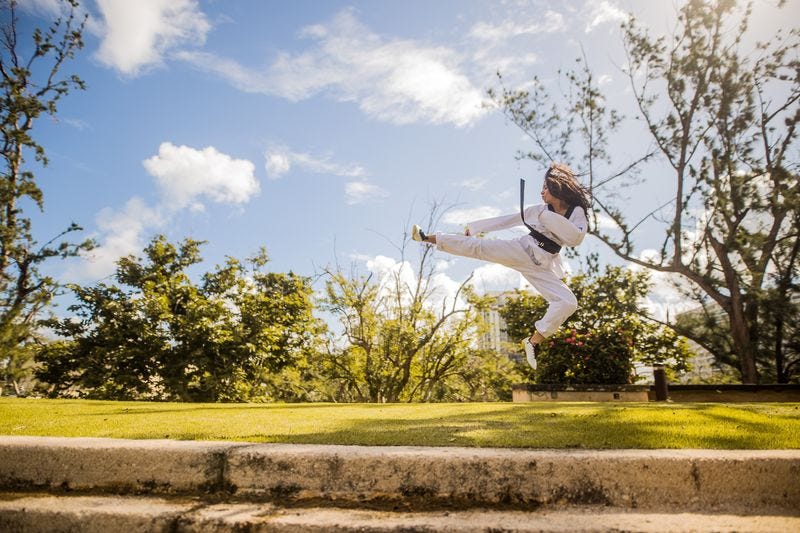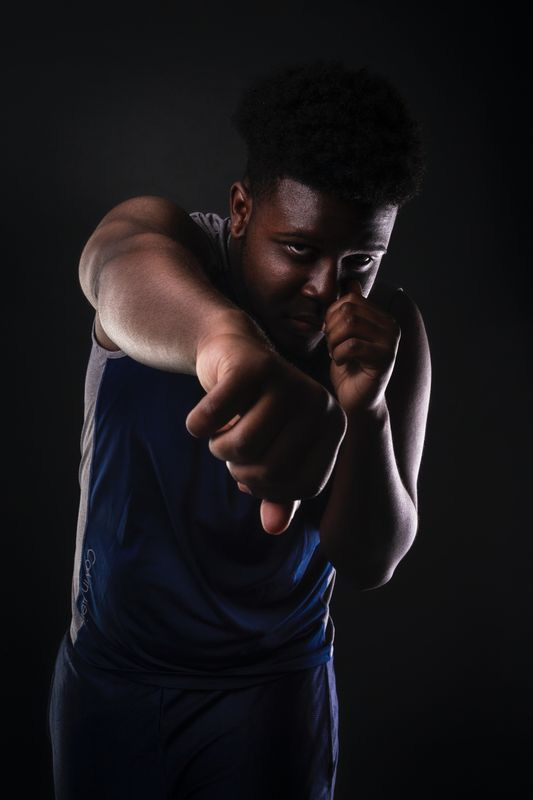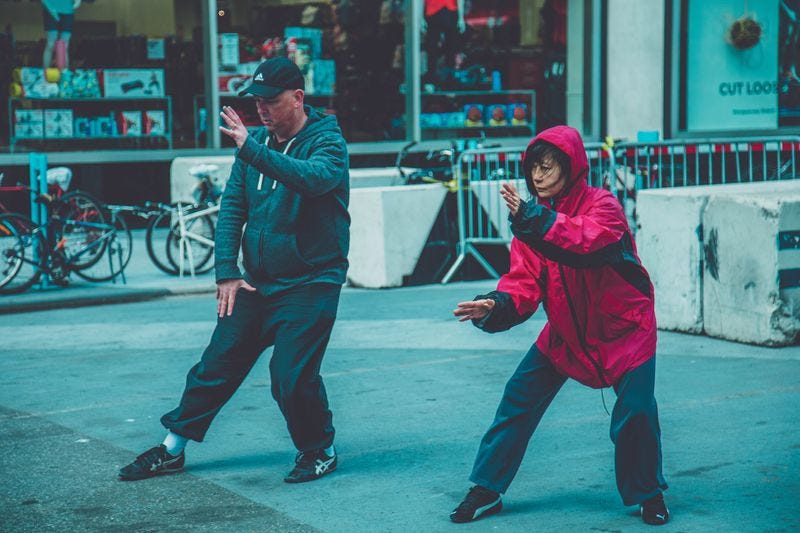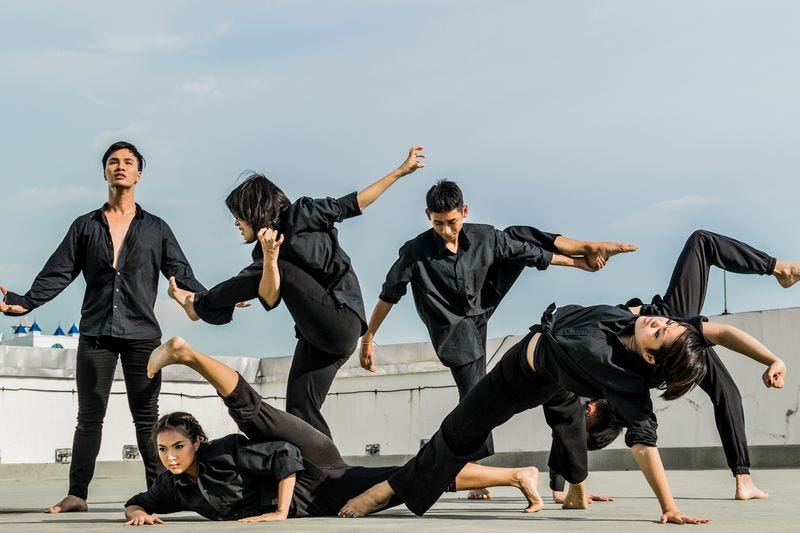Martial arts training is one of the few situations where people learn how to yell. Most children are told not to yell or to be quiet; some children more than others. "Use your indoor voice!" Yelling can be a means of violence. Like learning how to punch or kick, learning how to yell in an appropriate context can be a self-defense tool.
In my martial arts training in karate and aikido, I have uniformly been instructed to yell in a deep voice from my belly. A yell, or kiai, has several benefits in martial arts. Being loud ensures that people can hear you, whether it's the students you're instructing or the bystanders on the train if someone is assaulting you in a self-defense situation. A loud noise can startle your attacker, make them freeze momentarily, or make them back up. Yelling can raise your confidence and ability to defend strongly, like a battle cry. The physical act of forcing air out of your lungs and tensing your stomach muscles while remaining relaxed and ready is the best way to prepare your body to get punched or fall to the ground.
I believe in all these benefits of yelling. However, I don't think everyone needs to use a deep, masculine voice to yell, as I have been instructed.
When I started practicing a more masculine speaking voice, I experienced deja vu. This was close to what I associated with "a martial arts voice." I found it comfortable, even gender-affirming. But what about transfeminine people, women, or nonbinary people who routinely remove the deeper, lower qualities from their speaking voice? Surely it doesn't make sense for everyone to yell the same way.
A yell for self-defense has to be: (1) LOUD and (2) an exhale of air to get your body ready for impact. "Deep" or "low" sounds are optional.
You can yell effectively near the top of your range and near the bottom of your range - whatever feels most comfortable. If yelling near the top of your range, you may require tension in your face, throat, and upper chest to create a twangy or almost screechy sound. These aren't good descriptions - I'm not good at describing voices, but in general, you would need a lot of airflow and tension surrounding that flow of air to produce a loud noise at a higher pitch. If you feel the sound made from your belly, you can raise it to your upper chest or throat if you are more comfortable with that sound. It takes time and practice to figure out how to be loud.
If you prefer a deep, low belly yell, you'll need to relax your body overall (but compress your belly when the air goes out for your yell). Try placing your hands on your lower abdomen and feeling the vibration there. Relax your throat and upper chest so the sound can come from lower down. Try breathing out without a sound and feel your throat open and relaxed. Then yell (gently, at first) with your throat still relaxed. Gradually get louder as you get more comfortable with this kind of sound.
If yelling intentionally high or low isn't right for you, you could also try splitting the difference and yelling with a medium-range voice from the chest. I would still recommend trying to relax the throat and breathe out a lot of air while you are yelling, especially if you are doing a martial art where you get hit or land on the ground.
Only you can figure out what yelling voice is most comfortable for you. I have learned a great deal from Renée Yoxon, a trans voice teacher. Their online course Trans Vocal Exploration has fantastic instruction and exercises for figuring out what is suitable for you, whether you are trying to masculinize or feminize your voice or something in between. Renée also has free resources and posts videos on Tiktok.
If you're in a real self-defense situation, you should not worry about how your voice sounds. Defending yourself and getting away is much more critical. But if you're practicing a martial art that encourages you to yell often, being comfortable with your gender-affirming yell can be very important. Your yell doesn't have to be gender-affirming if you don't want it to. It just has to be whatever makes the most sense to you, whatever makes you excited to come back and keep training.
If you want to read more about trans and nonbinary voices, please check out:








